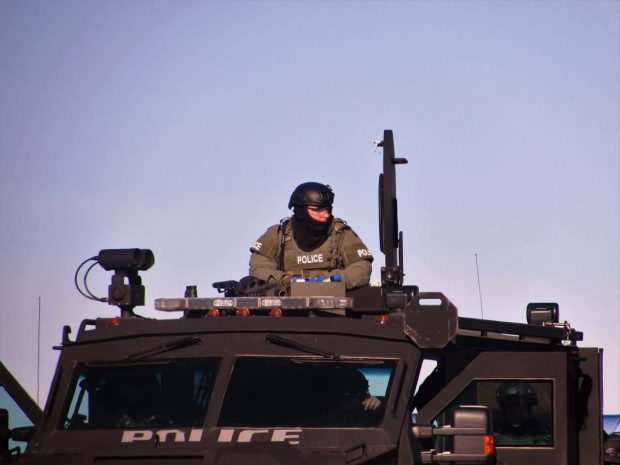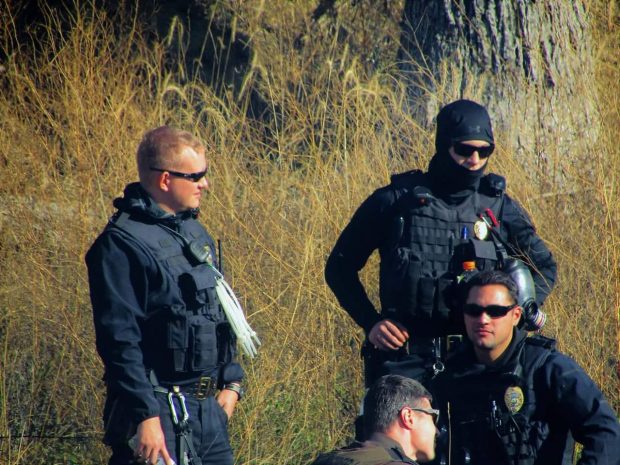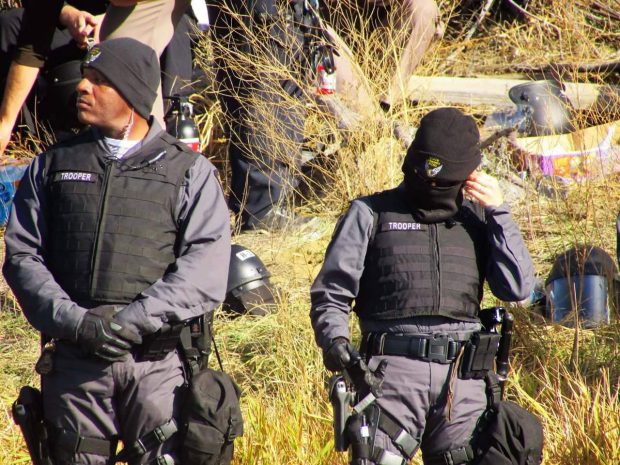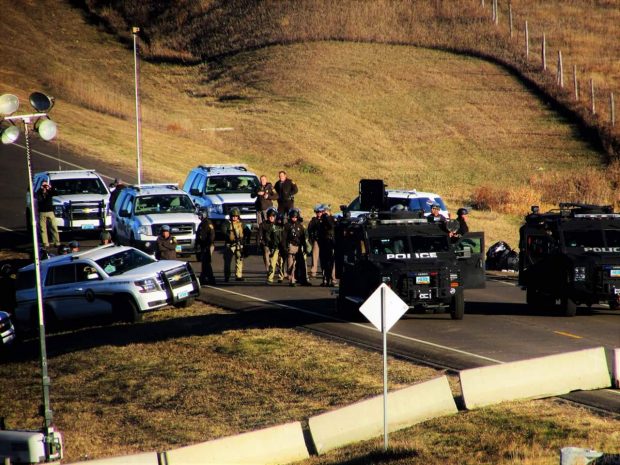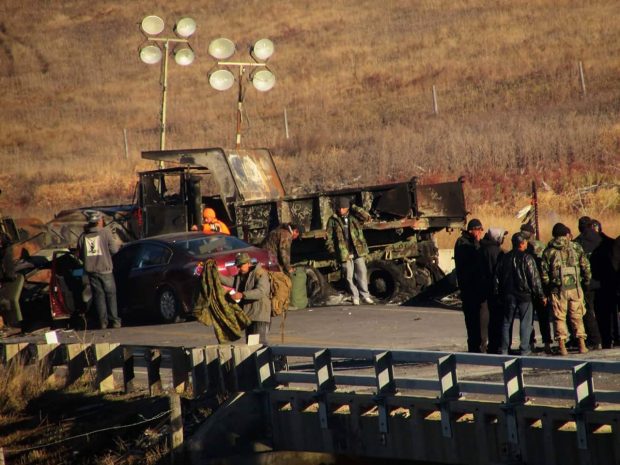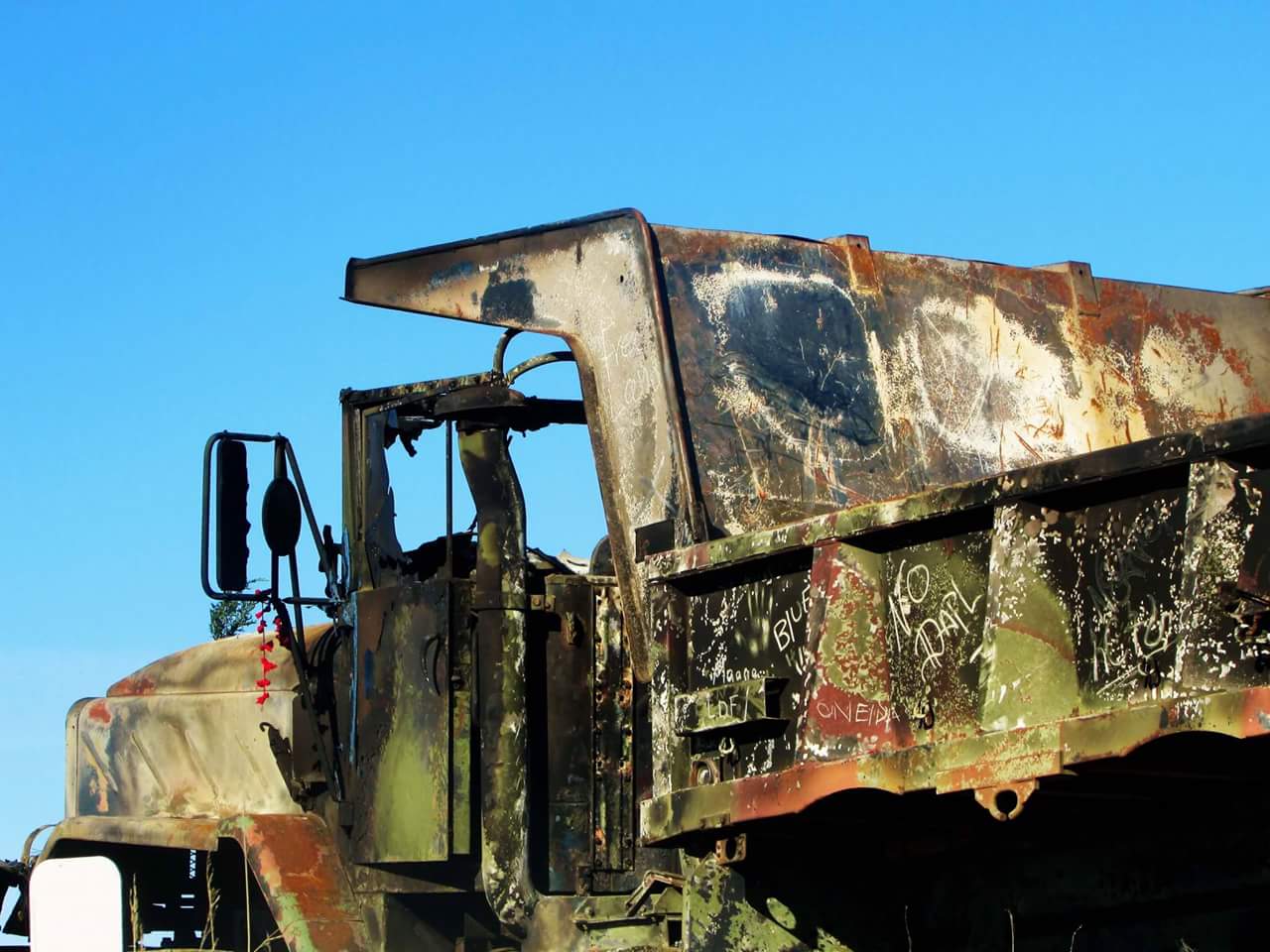
Fear and Loathing in North Dakota
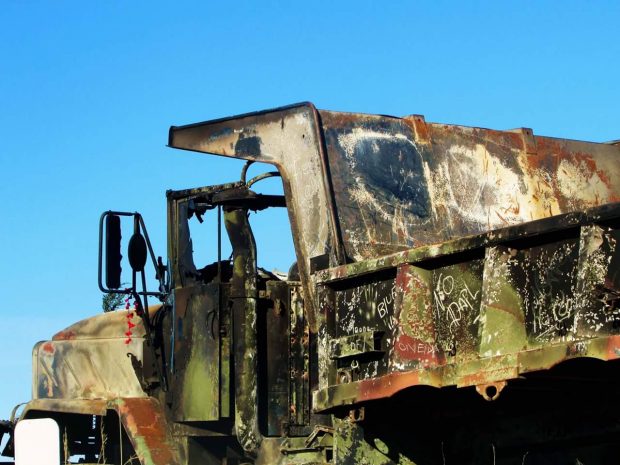
(Yoon Seok-Hee) Why are snipers, attack dogs, drones, helicopters, riot police, and rubber bullets used against a group of people armed with nothing but bodies and cameras? The entire world is asking these questions, as the United States continues to use the National Guard to police Native Americans in North Dakota. I had the same questions until I started talking to Natives who say “what they are doing is nothing new, the only thing that is new is the worldwide solidarity and attention that they are getting today.”
Until 1988, the United States’ official position was that Native American tribes did not have the right to self-governance, and must be assimilated into American society. Until the 1970s, Native tribes, although considered to be “dependent nations” of the United States, did not have legal authority over their lands and peoples. During the 40s and 50s, Native American lands were targeted for dams and water projects that destroyed their lands and resources. In 1924, the United States unilaterally made Native Americans citizens of the United States, taking away their rights to be an independent people.
The Natives remember this history and pass the memory down to their children. Most people I talked to knew that the U.S. army escalated a confrontation and killed 250 to 300 Lakota, mostly women, and children, in 1890. They mourn the death of the buffaloes, which the U.S. Army was ordered to exterminate in 1877, in order to protect railroad and agriculture businesses. They remember how the U.S. Army hung 38 Dakota men for fighting against treaty violations. They remember being driven out of their lands and the many treaty violations.
In the United States of today, Native Americans are no longer murdered by the Army and their skins displayed in public. Rather, in typical neoliberal fashion, they are forgotten until there is a profit to be made. Unemployment, drug and alcohol abuse, lack of public services, police brutality, and underinvestment plagues many reservations across the United States, but public funds continue to pour into protecting private infrastructure and capital.
